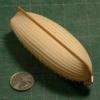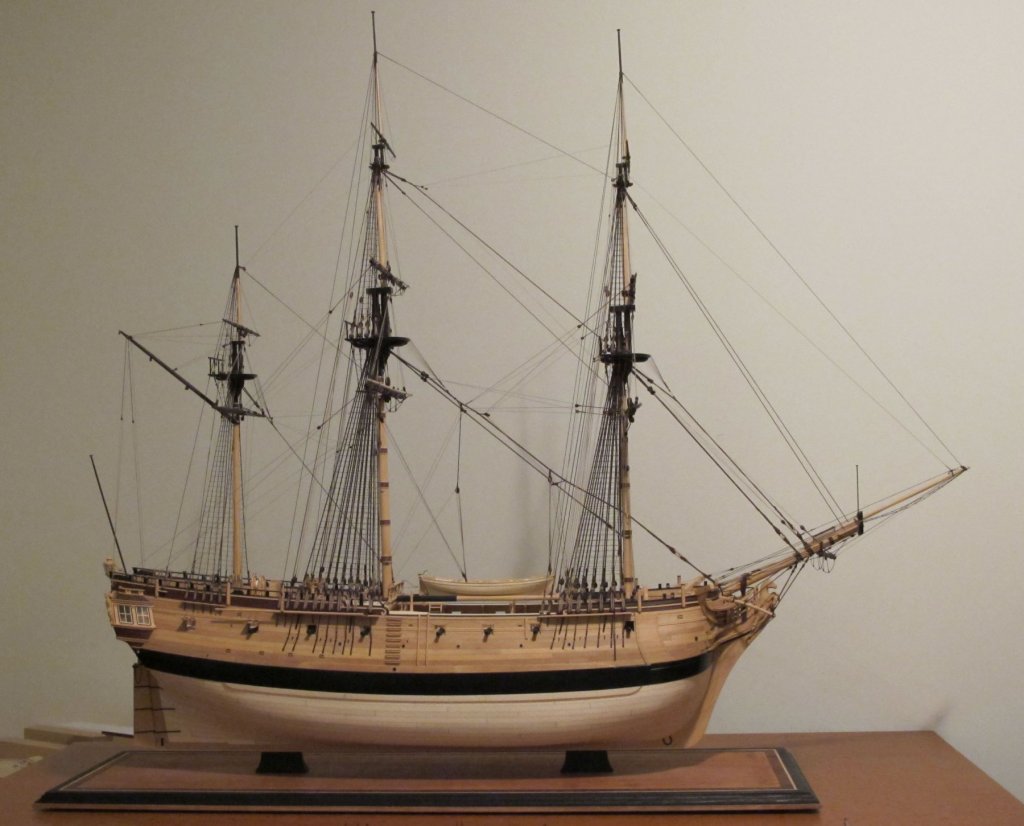-
Posts
13,290 -
Joined
-
Last visited
Content Type
Profiles
Forums
Gallery
Events
Everything posted by druxey
-
See the sail supplement booklet to the Swan Class series, Volume IV.
-
I believe that 'nitro cellulosic filler' that you are using is called sanding sealer in North America.
-

Weathering wood
druxey replied to JpR62's topic in Painting, finishing and weathering products and techniques
I agree with wefalck: bitumen never fully dries or 'sets'. Problems can become apparent years later. Have you ever seen old brown varnish finishes that have 'alligatored'? That's because they were bitumen based. Acrylic or oil paints in washes are far more reliable. -
There is one problem - I've run out of superlatives to describe your modelmaking skills!
-
Coming along very nicely, Toni. However, watch out for the tilt aft of the lights: yours are too vertical at present, I think.
- 1,449 replies
-
Sweet! That's a lot of aluminum (sorry I mean aluminium) and swarf!
-
Blaise Ollivier (1737) does not mention either kind of plate in his extensive commentary on English building practice.
-

Swan class 3D model in progress
druxey replied to dvm27's topic in CAD and 3D Modelling/Drafting Plans with Software
Alas, there is no hope for you, Denis...- 141 replies
-
- pof swan series
- swan
-
(and 1 more)
Tagged with:
-
The 'splash of white', as I interpret it, is either a painted highlight or, as in the model, a reflection form a glossy surface. In the first instance, I'd still make it pale blue, as pure white will optically 'jump' too much with high contrast at scale size. Whether I'm right or wrong doesn't matter; it has to please you, Drazen!
- 487 replies
-
- ship of the line
- 80 guns
-
(and 1 more)
Tagged with:
-
Continuing excellent progress, Amalio. First class work.
-
Drazen: Your observation that perhaps the color of reflected light off the water might influence the apparent color of the ribbon is good. However, I don't think that the color cast would be that significant in this case, especially, as you note, the water isn't blue!
- 487 replies
-
- ship of the line
- 80 guns
-
(and 1 more)
Tagged with:
-
I see dark blue lettering on a paler blue ground with lighter blue highlights on the ribbon to give a 3D effect. It is not white, which is seen on the underwater coating across the flat stern.
- 487 replies
-
- ship of the line
- 80 guns
-
(and 1 more)
Tagged with:
-
Differing surface reflectance can throw one as well. If one can spray paint, blending between old and new also helps.
- 749 replies
-
- albertic
- ocean liner
-
(and 2 more)
Tagged with:
-
Well re-cycled, Keith. I shuddered at your description of running the lathe at 200rpm to start off with!
-
Viele grusse, Barbara! That is a bitter-sweet story. I'm delighted that you are helping to complete the rigging on your father's model. To be honest, most of us need time to figure out the complex rigging from this era. The work that your father did on the hull etc., is beautifully done and the completed model will be a family heirloom, I'm sure. He is very fortunate in his choice of daughter!
-
Excellent news, E&T! Too bad they did not establish authorship before they went ahead. Hopefully, they will on another occasion.
- 346 replies
-
- terror
- polar exploration
-
(and 2 more)
Tagged with:
-
I'm sorry. After an extensive search on the internet, the only version of the photograph you describe is of such low resolution that I cannot make out any detail whatsoever. If you have a friend with a computer who can find a version of this with clear detail, perhaps he/she could post this here for us to look at. Otherwise, I don't think we can be of help to you.
About us
Modelshipworld - Advancing Ship Modeling through Research
SSL Secured
Your security is important for us so this Website is SSL-Secured
NRG Mailing Address
Nautical Research Guild
237 South Lincoln Street
Westmont IL, 60559-1917
Model Ship World ® and the MSW logo are Registered Trademarks, and belong to the Nautical Research Guild (United States Patent and Trademark Office: No. 6,929,264 & No. 6,929,274, registered Dec. 20, 2022)
Helpful Links
About the NRG
If you enjoy building ship models that are historically accurate as well as beautiful, then The Nautical Research Guild (NRG) is just right for you.
The Guild is a non-profit educational organization whose mission is to “Advance Ship Modeling Through Research”. We provide support to our members in their efforts to raise the quality of their model ships.
The Nautical Research Guild has published our world-renowned quarterly magazine, The Nautical Research Journal, since 1955. The pages of the Journal are full of articles by accomplished ship modelers who show you how they create those exquisite details on their models, and by maritime historians who show you the correct details to build. The Journal is available in both print and digital editions. Go to the NRG web site (www.thenrg.org) to download a complimentary digital copy of the Journal. The NRG also publishes plan sets, books and compilations of back issues of the Journal and the former Ships in Scale and Model Ship Builder magazines.





